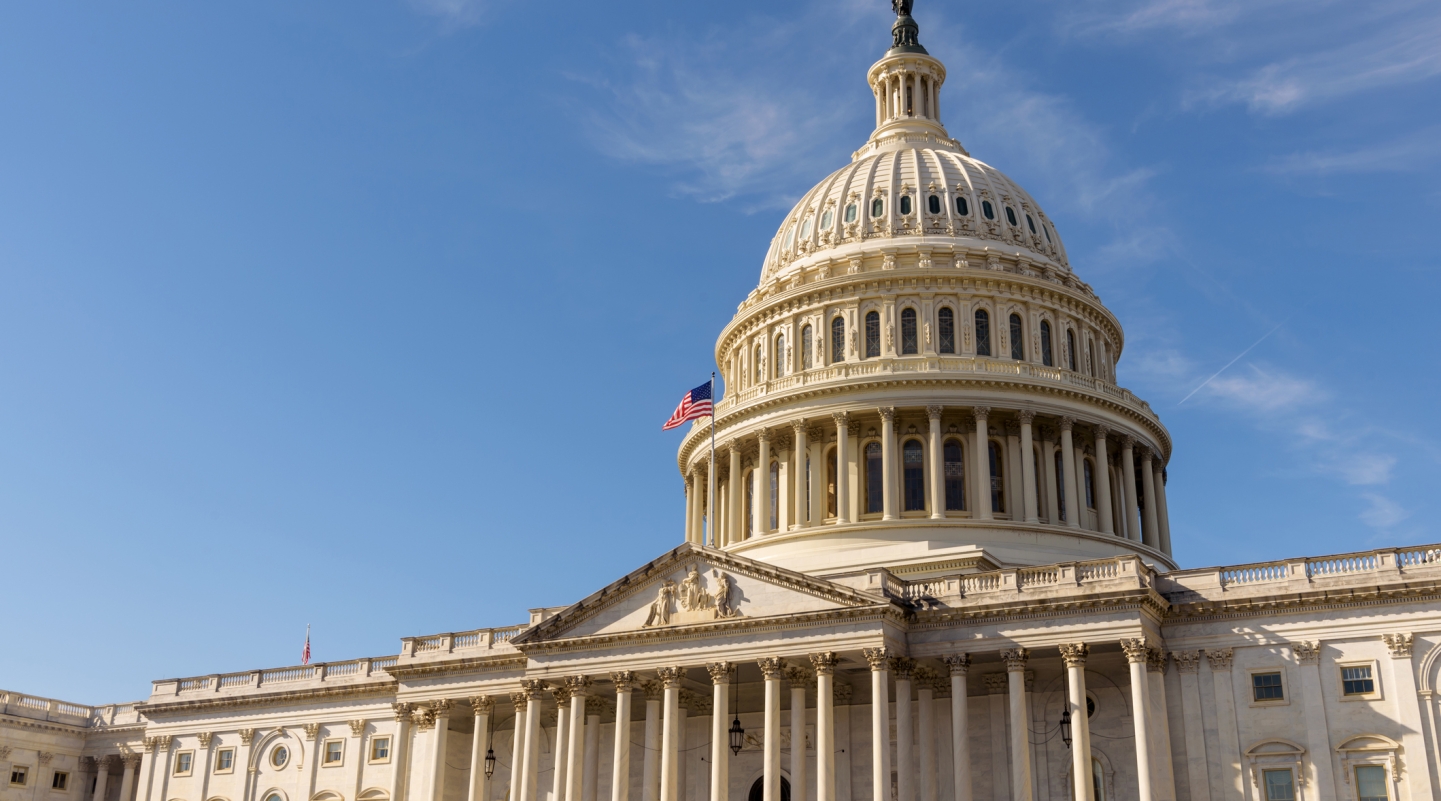Federal Reforms to Medicaid Financing: What Counties Should Know

Author

Blaire Bryant
Upcoming Events
Related News
Medicaid is a joint federal, state and local program that provides health coverage to low-income individuals, including children, pregnant women, elderly adults and people with disabilities. The program accounts for over half of all federal funding to states and is the largest source of federal funding in state budgets.
Jump to Section
Medicaid is a joint federal, state and local program that provides health coverage to low-income individuals, including children, pregnant women, elderly adults and people with disabilities. The program accounts for over half of all federal funding to states and is the largest source of federal funding in state budgets.
Counties play a crucial role in delivering Medicaid services by partnering with federal and state governments to manage local health systems and ensure access to care for vulnerable populations. Any reductions in Medicaid funding directly affect counties' ability to provide public health services, respond to crises and promote economic stability.
On February 20, NACo, in partnership with a coalition of bipartisan membership organizations representing state legislators, state governments, county managers and cities sent a letter to House and Senate leadership expressing concern over proposed changes to Medicaid financing requirements, following recent reconciliation proposals that would enact significant reforms to Medicaid.
This FAQ expands upon that letter, outlining the potential impacts of proposed Medicaid reforms to counties and offers steps county leaders can take to advocate for preserving Medicaid funding.
How do Medicaid reforms impact counties?
Counties are integral to Medicaid administration, funding and service delivery. In 24 states, counties contribute to the non-federal share of Medicaid costs, directly impacting local budgets. Counties also operate over 900 hospitals, 700 nursing homes and 750 behavioral health authorities, and over 1900 local health departments, providing essential healthcare services.
Medicaid covers 38 million children, funds 40 percent of all births and is the largest payer of long-term care and behavioral health services, all critical for county-operated hospitals, nursing homes and social services.
Potential reforms to Medicaid could lead to coverage losses, increased medical debt and higher uncompensated care costs for local providers, threatening access to affordable healthcare and placing a financial strain on county resources.
What potential reforms could be made to Medicaid?
Recent proposals to reduce Medicaid spending focus on capping spending per beneficiary, eliminating or reducing the federal share of costs for certain beneficiaries and implementing work requirements for enrollees. The chart below explains each proposal and its impact on counties.
Per-Capita Caps
Overview
Would limit the federal Medicaid funding states can receive per beneficiary.
Impact
Shifts the cost of care to states and counties; increases the burden of indigent care on counties.
Reductions in the Federal Medical Assistance Percentage (FMAP)
Overview
Reduces or eliminates federal funding contributions to Medicaid services for some enrollees; The Affordable Care Act's (ACA) Medicaid expansion expanded Medicaid coverage to nearly all adults with incomes up to 138% of the Federal Poverty Level ($21,597 for an individual in 2025) and provided states with an enhanced federal matching rate (FMAP) for their expansion populations. This enhancement could be reduced or eliminated under these proposals.
Impact
To date, 41 states have adopted Medicaid expansion, which covers approximately 21 million people according to 2024 CMS data. The impact of cuts to federal funding for this population would be significant coverage losses for beneficiaries, higher medical debt and uncompensated care costs for counties.
Work reporting Requirements
Overview
Mandates that certain beneficiaries must work, volunteer, or participate in job training to maintain Medicaid coverage.
Impact
Reduces state and county flexibility in program design, leads to coverage loss which may result in increases in uncompensated care costs; administrative burden for county eligibility and enrollment with no additional workforce support in this sector.
Restricting state and local use of provider taxes to finance the non-federal share of Medicaid
Overview
States fund Medicaid through various sources, including taxes on healthcare providers and managed care plans. Current federal rules allow states to tax providers up to 6% of net patient revenues under a safe harbor threshold, which prevents federal restrictions on Medicaid financing. Proposed changes would gradually lower this threshold to 3% by 2028, limiting states' ability to use these taxes for Medicaid funding.
Impact
States and counties would have less flexibility to use provider taxes to fund their Medicaid programs, potentially leading to budget shortfalls and service reductions.
What are the potential consequences of these proposed reforms?
The Congressional Budget Office estimates the proposed Medicaid reforms could result in millions losing coverage, leading to higher medical debt, increased uncompensated care costs and potential hospital closures, especially in rural areas. Specifically, reducing the federal match rate for Medicaid expansion could cut federal spending by $561 billion over nine years, forcing states to either drop expansion or absorb higher costs and jeopardizing coverage for millions.
See state by state impacts below.
Medicaid State-Specific Alternative Names / Nicknames
State | Alternative Name |
Alabama Medicaid | |
DenaliCare | |
Arizona Health Care Cost Containment System (AHCCCS) | |
Health Care | |
Medi-Cal | |
Health First Colorado | |
HuskyHealth, Husky C (for aged, blind or disabled persons) | |
Diamond State Health Plan (Plus) | |
Statewide Medicaid Managed Care Program (SMMC), Managed Medical Assistance (MMA) Program, Long-term Care (LTC) Program | |
Georgia Medicaid | |
MedQuest | |
Idaho Medicaid | |
Hoosier Healthwise, Hoosier Care Connect, M.E.D. Works, Health Indiana Plan (HIP), Traditional Medicaid | |
IA Health Link | |
KanCare Medical Assistance Program | |
Kentucky Medicaid | |
Bayou Health, Healthy Louisiana | |
MaineCare | |
Medical Assistance | |
MassHealth | |
Michigan Medical Assistance Program or MA | |
Minnesota Medical Assistance (MA), MinnesotaCare | |
Mississippi Coordinated Access Network (MississippiCAN) | |
MO HealthNet | |
Montana Medicaid | |
ACCESSNebraska, Nebraska Medical Assistance Program (NMAP) | |
Nevada Medicaid | |
NH Medicaid, New Hampshire Medical Assistance Program | |
NJ FamilyCare | |
Centennial Care; New Mexico Medical Assistance Program | |
New York State Medicaid | |
North Carolina Medicaid | |
North Dakota Medicaid | |
Ohio Medicaid | |
SoonerCare | |
Oregon Health Plan (OHP) | |
Pennsylvania Medical Assistance (MA) Program | |
RI Medical Assistance Program | |
Healthy Connections | |
South Dakota Medicaid | |
TennCare | |
STAR+PLUS; Texas Medicaid | |
Utah Medicaid | |
Green Mountain Care | |
Cardinal Care | |
Apple Health | |
DC Medicaid | |
Health PAS Online; West Virginia Medicaid | |
Forward Health, BadgerCare | |
Equality Care |
How could the FY 2025 budget reconciliation process impact Medicaid and counties?
Both the House and Senate have advanced budget resolutions that could lead to policy changes through the reconciliation process.
U.S. Senate
The Senate budget resolution would authorize roughly $340 billion in spending and be fully offset by corresponding spending cuts. The resolution instructs the Senate Finance Committee, which has jurisdiction over Medicaid, to reduce spending by $1 billion over 4 years. While specific cuts are uncertain, health-related reductions will likely target the Medicaid program.
U.S. House of Representatives
The House budget resolution requires at least $1.5 trillion in mandatory spending cuts over the next decade, with the Energy and Commerce Committee tasked with reducing spending by $880 billion. These cuts will likely target Medicaid, including potential reductions to the Federal Medical Assistance Percentage (FMAP), per-capita caps and work requirements.
Next Steps
The House and Senate have both adopted a unified budget resolution—a critical step toward using the party-line reconciliation process to pass legislation. With this hurdle cleared, lawmakers will begin drafting the actual bill, aiming for completion by Memorial Day. The final budget includes substantial federal spending cuts, with Medicaid financing reforms likely to be a primary focus. However, the exact nature of these cuts won’t be known until the reconciliation bill is written.
Dive Deep
Medicaid and Counties: Understanding the Program and Why It Matters to Counties
As Congress considers changes to the nation’s health care system, NACo urges them to consider implications of reforms that would merely shift costs to counties. Learn why the program matters to counties.

Contact

Blaire Bryant










